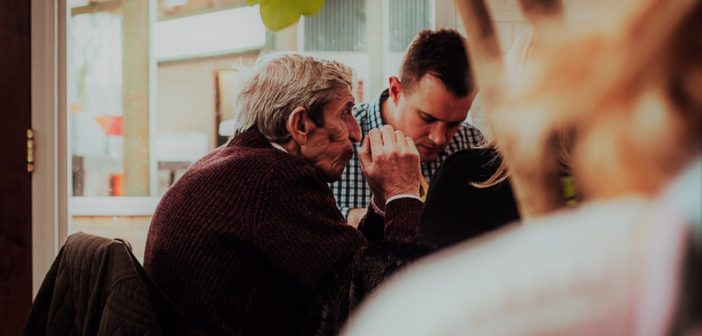Guest Post by Samantha Stein
When we talk about family caregivers and read about them online, we often picture women—daughters or wives—caring for their loved ones. In fact, the majority of research studies and surveys online are about female family caregivers and the struggles that they face. This brings one question to mind: What about the male caregivers?
For decades, caregiving has been perceived as woman’s responsibility. When one family member falls ill, the duty of providing care often goes to wife, daughter, or mother because of their love for family or because it was expected of them. This may be attributed to traditional roles: the man of the household provides while the woman nurtures. However, times are changing, and the lines between gender roles are quickly dissolving. Often out of necessity, more men are rolling up their sleeves to fill in the role of family caregivers.
Identifying with the Role of Caregiver
Caregivers often end up making drastic changes to their lifestyles in order to accommodate the demands of caregiving. Some choose to leave their careers and put having families of their own to the back burner. Others are put under great emotional and mental stress as they watch their loved ones battle ailments and health conditions. They dedicate not just their time but their resources and well-being to ensuring that their loved ones receive the care and support that they need. Caregiving takes so much from a person, and they need all the support that they can get.
However, the danger in this situation is that male caregivers often do not see themselves as such. They view the responsibilities that come with caregiving as simply part of being a family and nothing else. This then leads to fewer chances of identifying their concerns and effectively addressing them.
Male Caregivers in Numbers
Among the ranks of older generations, the family caregivers are often women in their late 40s, caring for a mother or mother-in-law in her 60s. Typically, they are not living in the same house as their care recipient. And they are often married and employed.
The younger generations have a different take on caregiving. Although the caregiver population may be predominantly female in the past years, males from the incoming groups are quickly catching up.
Today, studies show that up to 45% of caregivers are men. According to The Millennial Caregiver, a study by the AARP Public Policy Institute and the National Alliance for Caregiving, caregivers from the 18-34 age range are equally likely to be male or female.
A Different Approach to Caregiving
Male caregivers approach caregiving differently than their female counterparts. In a study done by researchers at Bowling Green State University, researchers cited that men appear to deal with caregiver stress better through a ‘block and tackle’ approach. What they do is address one issue before moving on to the next whereas women caregivers tend to internalize their performance with worry and anxiety. There are also more assertive when it comes to demanding answers about their loved one’s health issues.
However, unlike their counterparts, male caregivers are perceived to be less inclined to ask for help. The New York City chapter of the Alzheimer’s Association cited in a recent Forbes article that only 20% of their callers to their help lines are men. They struggle with the intricacies of the health care system and find it difficult to address problems with no clear-cut solutions.
What Needs to Be Done?
Male caregivers may be growing in numbers, but the research and awareness surrounding it appear to be struggling to keep up. Not much data is available about the issue that male caregivers face, and this makes addressing their challenges all the more difficult. In order to address their problems effectively, organizations and various groups must work hand in hand to bring them to the forefront.
Samantha Stein is an online content manager for Association for Long Term Care Planning. Her works focus on long-term care information that covers long-term care insurance, financial planning, elder care, and retirement. In line with the organization’s goal, Samantha creates content that helps raise awareness on the importance of having a comprehensive long-term care plan not just for the good of the individual but for the safety of the entire family.




